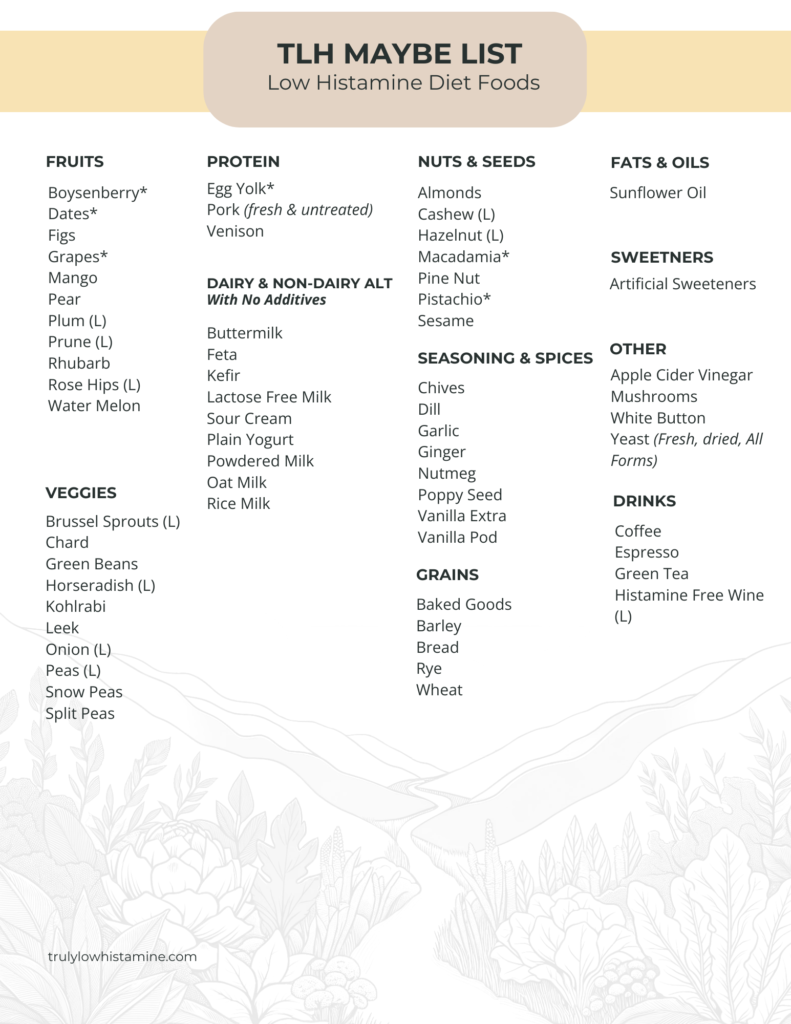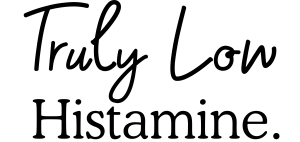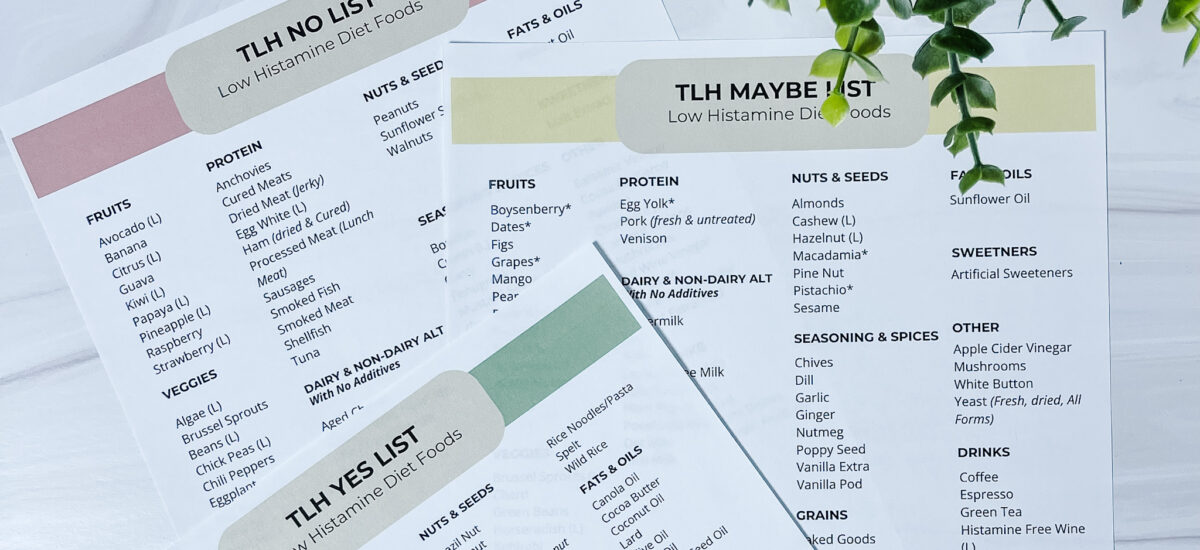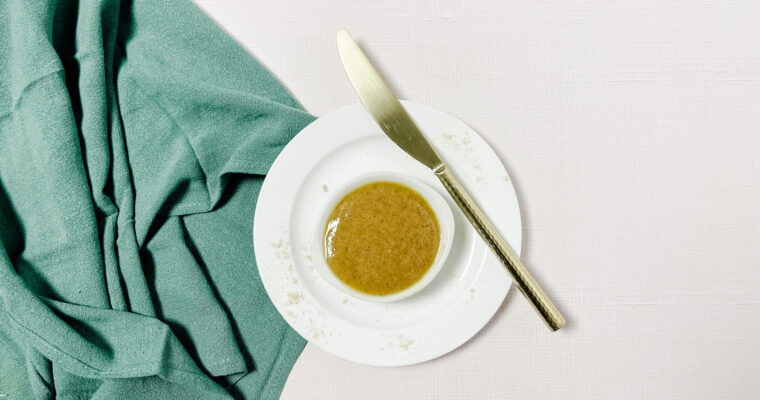Navigating a low histamine diet can be a daunting task, as knowing what’s safe to eat can be overwhelming. To simplify this process, I’ve created the YES, NO, and MAYBE Low Histamine Diet Foods lists for your convenience. These lists were designed as easy-to-use references that you can print and place in your kitchen for convenient meal preparation or carry with you on the go. The lists are regularly updated using the SIGHI Histamine Food Compatibility List to ensure their accuracy.
The foods on this list are a subset of what I think are the most common and versatile foods in the American diet from the SIGHI list. For the complete list and all the wonderful information that accompanies it CLICK HERE.
NOTE: There are other credible Histamine food lists that I will reference. You can find a link to those below, however, for this blog, I will use SIGHI as my go-to list.
Tips for Using These Food Lists
Here are some important things to take note of before you move forward.
- The Basics – This is a list of basic ingredients. To determine if a meal or packaged item is compatible, read the Ingredient list on the package. If all the ingredients are on the YES list you are good to eat.
- Beware of Additives – Many food additives are not allowed and can move an item from the YES list to the NO list. For example – Locust Bean Gum can take Cream Cheese from the YES list to the NO list. That includes “Natural Flavors”, which are not always natural. Check the SIGHI additives lists to know which are ok.
- General Guide – These lists are a general guide and not black-and-white rules. You may find you can tolerate some things on the MAYBE or even the NO list. Or there may be something on the YES list you can’t tolerate. In the end, after testing, If you can tolerate it, you can move it to your YES list.
Just a quick note: I’m not a doctor, I don’t even play one on TV, but I am excited to share my personal low histamine diet journey with you because it has been life-changing for me. Remember, what works for me may not be a perfect fit for you. This blog is meant to share what I discovered through research and working with my doctors and hopefully offer some helpful insights based on my experiences. Before making any big changes, it’s always a good idea to chat with your healthcare provider.
Important Definitions
Histamine Intolerance – Also known as histaminosis or histamine sensitivity, is a condition in which the body has difficulty processing and metabolizing histamine. Histamine is a naturally occurring chemical compound involved in several bodily functions, including regulating stomach acid, immune responses, and neurotransmission.
In individuals with histamine intolerance, the body lacks sufficient levels of an enzyme called diamine oxidase (DAO), which is responsible for breaking down histamine in the digestive system. As a result, excess histamine accumulates in the bloodstream, leading to a range of symptoms, such as headaches, hives, digestive issues, nasal congestion, and more.
For a deeper dive into histamine Intolerance, check out my blog post LIFE ON A LOW HISTAMINE DIET: RESOURCES, TOOLS, AND TIPS
Histamine Liberators – Histamine Liberators are substances with low histamine content that can trigger the release of histamine from mast cells. Some people react more strongly to Histamine Liberators, myself being one of them. A food item can be low in histamine but be a histamine liberator and that can put it on the MAYBE or NO list. Histamine Liberators include
- Egg whites
- Shell Fish
- Sunflower Seeds
- Nuts (Cashew, Hazel, Pine, Walnut)
- Avocado
- Beans
- Brussels Sprouts
- Horseradish
- Kelp
- Onion (excluding White Onion)
- Legumes (Beans, Lentils)
- Tomato
- Citrus Fruits
- Chocolate/Cocoa Powder
- Other Fruit – Kiwi, Pineapple, Plum, Strawberry
- Seaweed
- Cumin
- Mustard Seeds (powder, mustard)
- Alcohol
- Wheat Germ
DAO Blockers – DAO blockers are foods that block the action of Diamine Oxidase (DAO), an enzyme that breaks down histamine in food during digestion. DAO Blockers include:
- Alcohol
- Green Tea
- Black Tea
- Ascorbic Acid
Low Histamine Diet Food List
TLH YES List
These are food items that are compatible with people who have a histamine intolerance. They include foods with a SIGHI of 0 and are generally agreed upon in the other reputable lists. This YES list is designed to get you started. You will test for your own personal relationship with Histamine Intolerance. As you test and clear items from the MAYBE and NO list, add them to your own YES list. Click the list below to download or print a copy.

TLH MAYBE List
The food items on this list are moderately compatible with people who have a histamine intolerance. These are foods with SIGHI of 1. Occasional consumption of small quantities is often tolerated. You may experience minor symptoms when you eat these, or you may not react. You will need to test each of these foods to see if you can tolerate it. If you find that you can tolerate a particular food, you can then include it in your “YES” list.
Foods With an *
In this blog, when a food has a SIGHI value of 0 but other lists overwhelmingly disagree about its compatibility, I will mark it with an asterisk (*). While SIGHI deems these items compatible with a low histamine diet, I have categorized them under the MAYBE list for you to personally test their suitability. My aim is to ensure the recipes on this site are TRULY LOW HISTAMINE, allowing you to feel confident in preparing and eating them. Therefore, I am adopting a conservative stance by including these items on the MAYBE list. Click the list below to download or print a copy.
Foods that are Histamine Liberators are indicated with an “(L)” after the food item.

TLH NO List
The “NO” list comprises foods that are incompatible with people who have a histamine intolerance (SIGHI 2 and 3). They are foods that are high in histamine, histamine-liberating foods, and foods known as DAO Blockers. These items are typically associated with significant symptoms when consumed regularly and are generally poorly tolerated, often leading to severe symptoms. Click the list below to download or print a copy.
Foods that are Histamine Liberators are indicated with an “(L)” after the food item.

HOW TO TEST FOODS ON A LOW HISTAMINE DIET
Testing food tolerances on a low histamine diet requires an intentional and patient approach.
STEP 1: Start by eating only foods on the TLH YES List. These are foods that are well-tolerated and have low histamine content. When your symptoms are very low or gone (can take 4-6 weeks, if not longer), you are ready to move on to Step 2 and start testing.
STEP 2: Introduce ONE new food item at a time, at each meal for a day. Then wait for 48 to 72 hours to observe any reactions. Do not introduce any other new foods in this time period. This waiting period is crucial as it allows you to accurately assess your body’s response to the new food.
Be certain to keep all other inputs consistent (water and supplements) so that the only change to your diet is the addition of the food you are testing.
STEP 3: Document your experiences in the Truly Low Histamine Food Journal. Any days that you are testing a food, write that food just under the recorded date. Make notes in the “Symptom Check” boxes of any changes in symptoms or overall well-being. If you experience no adverse reactions, you can consider the food tolerable for your diet. However, if symptoms do appear, remove the food from your diet and allow your body time to recover before testing another food.
STEP 4: Go a full week with that food added to your diet before you test another food for tolerance. When you clear the week and are ready to test a new food, head back to STEP 1 and repeat the process.
TIPS: It’s important to conduct this process slowly and one food item at a time, as overlapping tests can lead to confusion about which food is causing the reaction. Remember, everyone’s body is unique, so what works for others may not work for you, making personal testing essential on a low histamine diet.
Tips to Tame Histamine Levels in Your Meals
As food ages, Histamine levels in food can increase over time due to a combination of bacterial activity and enzymatic processes. This is why fermented foods are a big NO on a low histamine diet. Generally, the fresher the food, the lower the histamine content.
You could make yourself crazy and end up in “analysis paralysis” when you start down the rabbit hole – “Can I eat canned foods? What about processed foods? Will I have to make my own tortilla chips? What about leftovers or the butter that I left on the counter all day? Can I eat those? GAH. What do I do!?”
So here are 4 tips you can use to help manage those concerns
- Start Low Histamine – Eat foods that are low histamine to begin with. If you simply eat the same way you have always eaten but all the foods are now low in histamine you are already in a FAR better position.
- Go Fresh – Eat fresh foods when you can, and when can’t or don’t see Tip 1.
- Frozen is Your Friend – Buy already frozen or freeze your meat until you are ready to use it. Protein builds in Histamine quicker so freezing it quickly is a big help in taming histamine levels.
- Limit Leftovers – Avoid Leftovers older than 1-2 days
Histamine Intolerance Food List Resources
There are so many Low Histamine diet food lists out there, and to make things more confusing there is disagreement on what foods can and can not be eaten on a Low Histamine Diet. To make things even more confusing, people react differently to some foods so something that may be a non-issue for you might be a problem for me.
Because this blog offers truly low histamine recipes and I want you to have confidence in what you are making and eating, I am going to take a conservative approach. The Swiss Interest Group Histamine Intolerance (SIGHI) histamine food compatibility list is a reputable and respected source that nearly every other list references.
The SIGHI list will be the “gold standard” on this blog. However, where there is much disagreement on a food item and how well it is tolerated by those with histamine intolerance, I will move that item to the MAYBE food list for you to test on your own. If it is good for you, you can add it to the YES list.
Histamine Intolerance Food Lists
Here are the lists of reputable sources for Histamine Intolerance Food Lists I reference in my blog and recipes.
Primary Resource
Additional Resources







